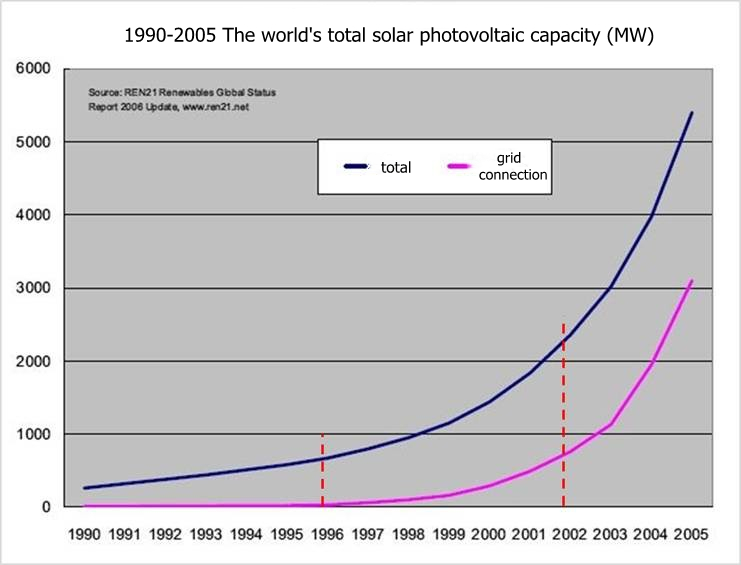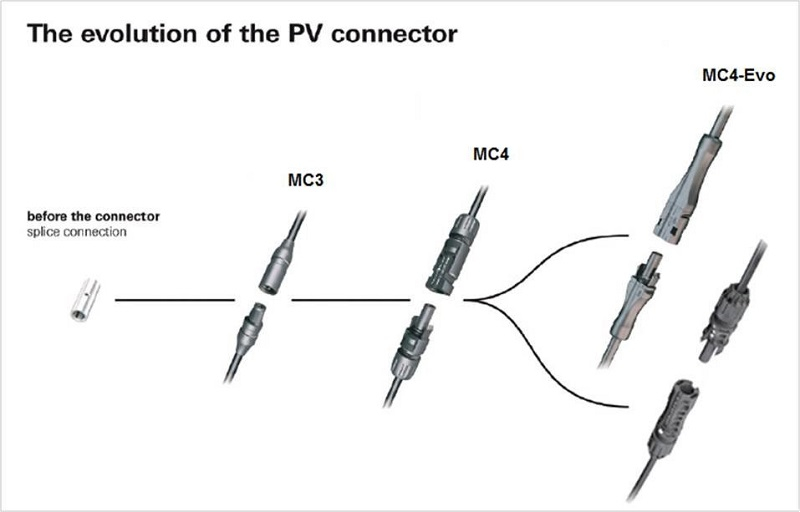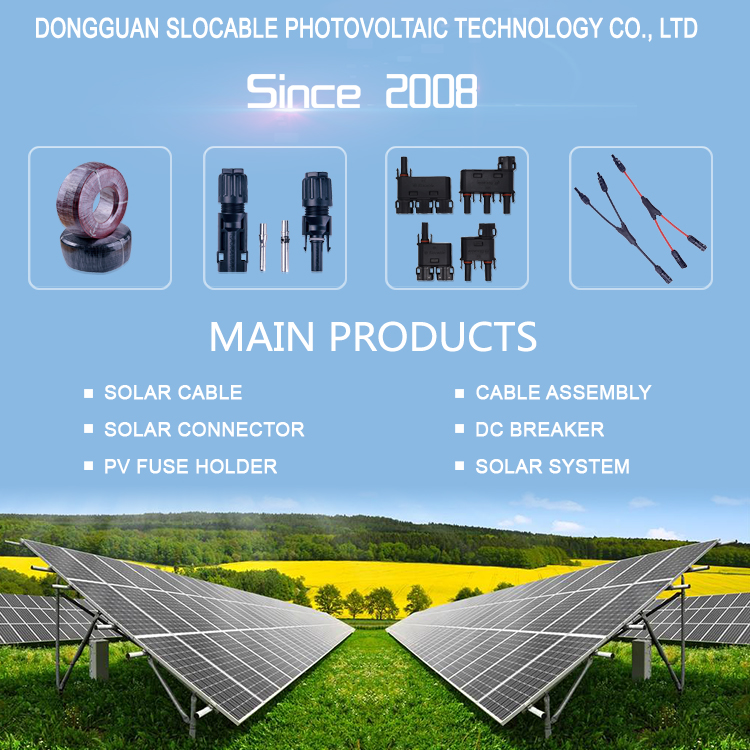MC4 is no stranger to photovoltaic practitioners, it has almost become synonymous with photovoltaic connectors. The multi-contact MC4 connector can be found on important components of photovoltaic power generation such as modules, combiner boxes and inverters, and they are responsible for the successful connection of the power station.
By the end of 2015, China's cumulative installed photovoltaic capacity was 43.18GW, ranking first in the world. Calculated on the basis of about 4,200 sets of photovoltaic connectors used in 1MW, there are currently about 180 million sets of connectors installed in China. From the perspective of risk, it means that there are at least 180 million risk points that need to be monitored by different power station owners.
Nevertheless, this small part is often overlooked during the design, construction, and operation and maintenance stages of the power station. The reason is very much related to everyone's understanding of MC4.
Maybe it's time to get to know the multi-contact MC4 connector again.
A brief history of solar connectors

For multi-contact MC4 connectors, 1996 and 2002 are two very important years. These two points in time also coincide with the key development nodes of the photovoltaic industry. Although the multi-contact MC4 did not accompany the photovoltaic industry, its appearance has greatly promoted the rapid increase in photovoltaic installations.
Before 1996, photovoltaic cables were connected by screw terminals or splice connections. With the increase in the number of photovoltaic systems installed, the industry has an increasingly strong demand for fast, safe and easy-to-operate connection solutions.
Because the photovoltaic system is exposed to wind, rain, scorching sun and extreme temperature changes for a long time, the solar connector must be able to adapt to these harsh environments. They must not only be waterproof, high temperature resistant and weather-resistant to ultraviolet rays, but also touch protection, high current carrying capacity and high efficiency. At the same time, the low contact resistance is also an important consideration. All of this must run through the entire photovoltaic system life cycle, at least 20 years.
In 1996, based on these application environments and market demands, a new type of plug-in connector came into being. This is the world's first truly photovoltaic connector-MC3. Its inventor is the Swiss company Multi-Contact (in 2002, merged into the Stäubli Group as its electrical connector brand), MC is the brand abbreviation, and 3 is the size of the metal core diameter. The main body of MC3 is made of TPE material (thermoplastic elastomer), and the physical connection is achieved through frictional cooperation. More importantly, MC3 uses MULTILAM technology in its connection system to ensure the lasting stability of the connection. Later, many connector manufacturers are imitating MULTILAM technology.
In 2002, the birth of a multi-contact MC4 connector redefines the photovoltaic connector again, which truly realized "plug and play". The insulating material uses PC/PA, and the design is easier to assemble and install on-site. After multi-contact MC4 came on the market, it quickly gained market recognition and gradually became the standard for photovoltaic connectors. Many manufacturers call their own connectors "××MC4". If you search for MC4 in Alibaba, you can get about 44,000 related products, which shows the strong market influence of MC4.
MC4 has successively launched the MC4-Evo2 and MC4-Evo3 series as the market demand changes. MC4 series connectors can fully meet the needs of customers for 1500V photovoltaic systems.

MC4 and "MC4-like"
Multi-contact MC4 connectors are divided into wire ends and board ends. In the usual sense, the MC4 referred to by everyone refers to wire ends. MC4 consists of two parts: metal parts and insulating parts.
As mentioned earlier, MC is the abbreviation of Multi-Contact, and 4 is the size of the metal core diameter. Therefore, in the photovoltaic connector market, many so-called MC4s need to be re-clarified, and they may be more appropriately called "MC4-like".
Except for some appearance differences (such as shape/logo, etc.), the core difference between MC4 and "MC4-like" is whether to use MULTILAM technology. MULTILAM technology has long-term stability, which can ensure that the connector maintains a consistently low contact resistance throughout the life cycle of the photovoltaic system.
"MC4-like", for market reasons, claims to be mating with MC4. Although it looks like the connection is completed, the hidden security risk has already occurred. Connectors of different manufacturers are not consistent in specifications, dimensions and tolerances, so they cannot be matched 100%. If you forcibly insert each other, it will cause temperature rise, contact resistance changes, and problems that the IP rating cannot be guaranteed, which will seriously affect the power generation efficiency and safety of the resistors.
What's more serious is that if there is a problem, it is very likely to lead to legal disputes. As the relevant laws and regulations are not perfect, the responsibility for problems caused by mutual insertion is likely to be borne by the power station installer.
Therefore, both TüV/UL and Multi-Contact have issued a statement prohibiting the mutual insertion of connectors from different manufacturers.
Technical risks of Multi-Contact MC4 Connectors
In the evaluation, design, procurement, construction, construction and operation and maintenance of photovoltaic power plants, there are uncertain risks (policy/technology/natural environment/laws, etc.). Improper control will affect the revenue of photovoltaic systems.
As far as photovoltaic connectors are concerned, the technical risks are embodied in quality, application, installation, and operation and maintenance.
It needs to be pointed out that the root cause of the failure of the PV connector and the fire is: in the case of current flow, the contact resistance of the connector increases, which leads to an increase in temperature rise, which exceeds the temperature range that the plastic shell and metal parts can withstand.




 2020-10-29
2020-10-29

















